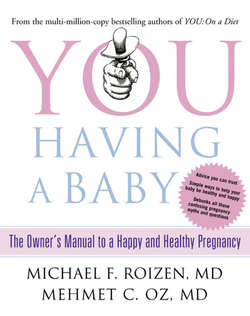Читать книгу You: Having a Baby: The Owner’s Manual to a Happy and Healthy Pregnancy - Michael Roizen F. - Страница 43
Take a Look
ОглавлениеIn the pecking order of things you want to look at in the delivery room, your placenta may rank pretty close to the bottom of the list. But that doesn’t mean your doc or midwife should feel the same way. While you’re gazing at your little darlin’, your provider should be inspecting your cute, adorable, squishy organ. Why? A one-minute examination of the placenta provides info that may be important to the care of both mother and infant. The doctor will assess the size, shape, and consistency of the placenta, as well as the umbilical cord. She’ll also make sure it’s complete and has no missing parts, for leaving some of the tissue in the body can cause hemorrhages up to two weeks later. The delivered placenta can also give clues to future problems, and if something looks abnormal, tests can help determine the best course of treatment or monitoring in future pregnancies. A thin cord can indicate a stressed environment in utero, which may help you make different lifestyle decisions during your next pregnancy. And a placenta that has calcification may indicate a decreased delivery of nutrients and that mom may have a condition that has compromised her arterial health, such as unrecognized changes in blood pressure.
can carry information that could sabotage the relationship between mother and child. But the mother’s immune system overlooks this fact and seeks to protect the child anyway. In a way, you can consider pregnancy an immunosuppressed state; the volume of mom’s immune system is turned down as it deals with this foreign, yet welcome, invader. As we mentioned, the most dangerous time for the newly created creature is prior to implantation in the uterine wall. If mom’s immune system is not suppressed when the fertilized egg tries to land, it’s bye-bye, blastocyst. So exactly one day before implantation—six days after conception—the blastocyst produces a special enzyme that suppresses mom’s killer T cells, preventing her from having an immune reaction to the baby-to-be’s cells. Once the placenta is formed after implantation, it helps maintain the truce between these two potential adversaries.
A baby’s immune system isn’t fully developed before birth, so it needs a hand from mom, who passes her own immune-system warriors, called antibodies, through the
